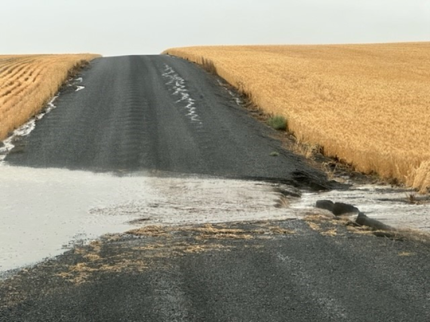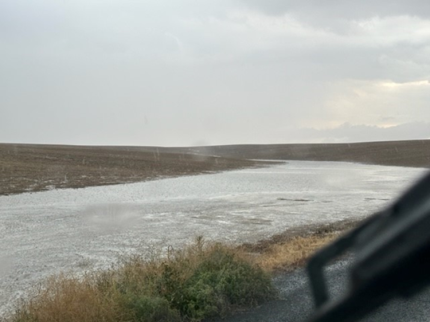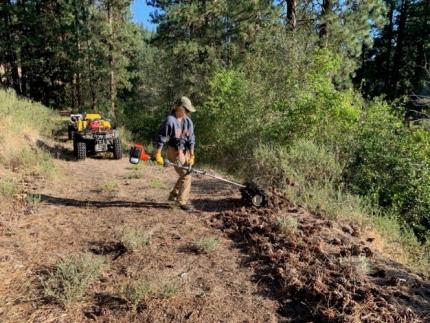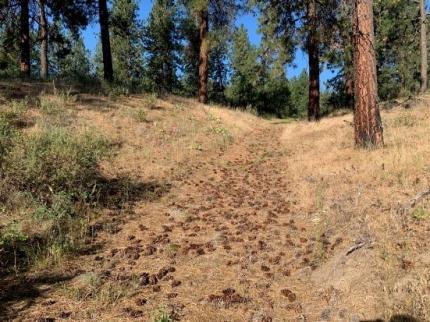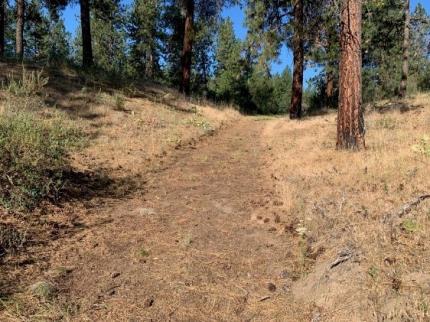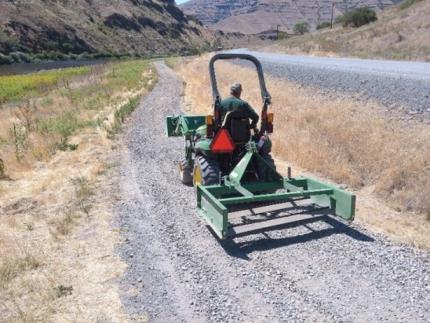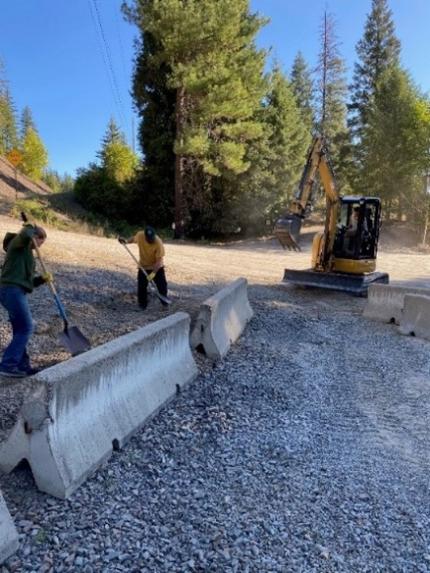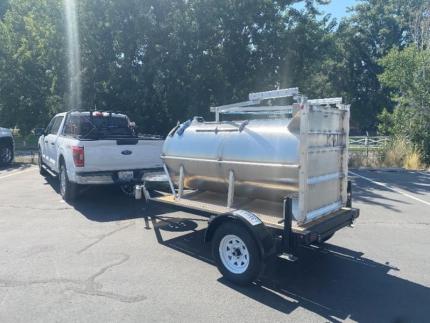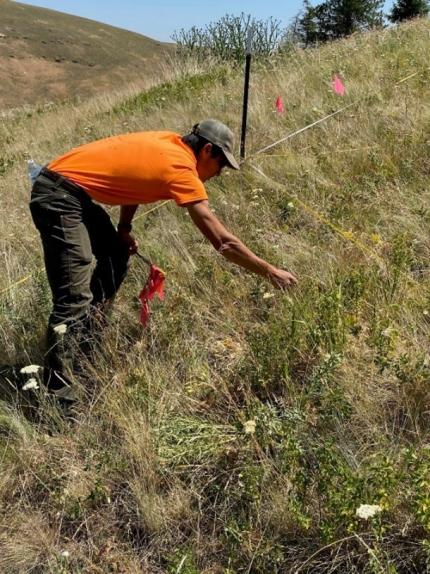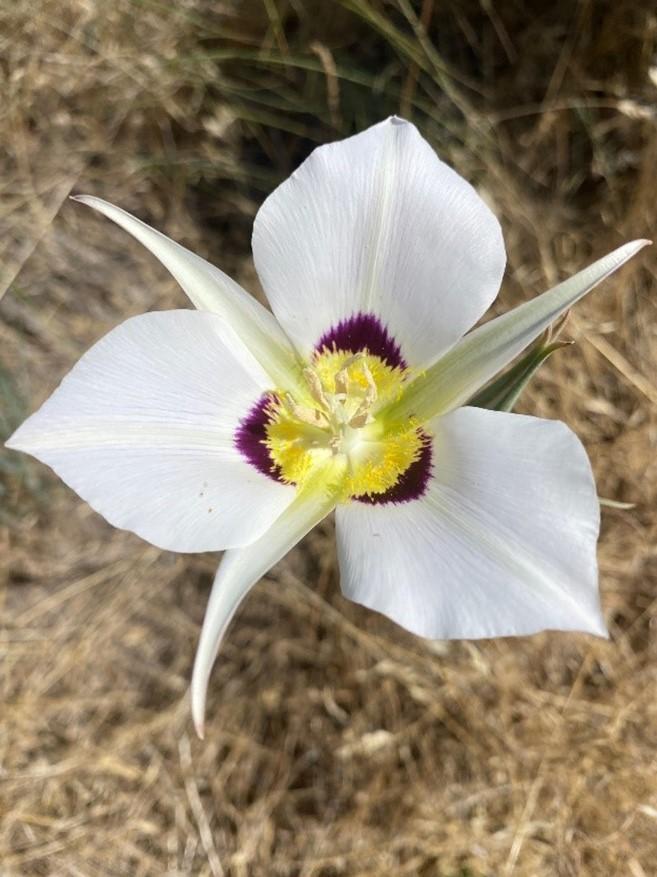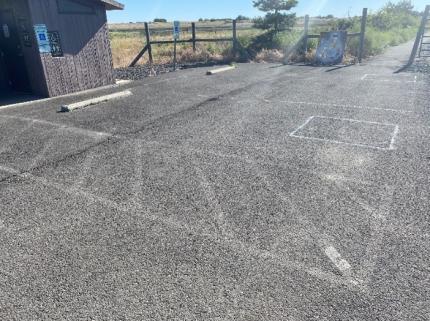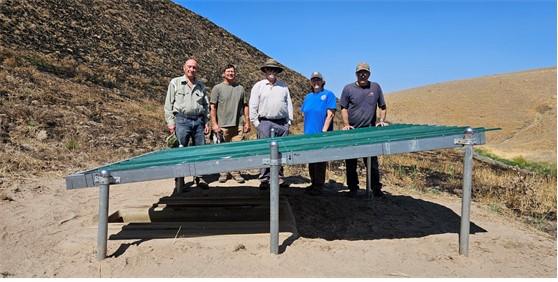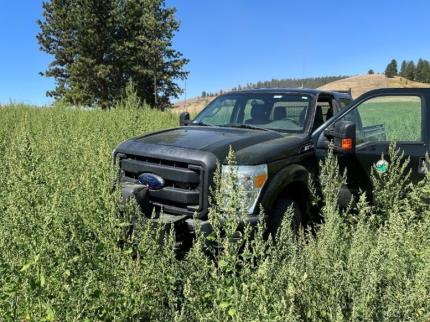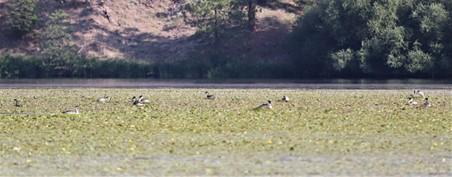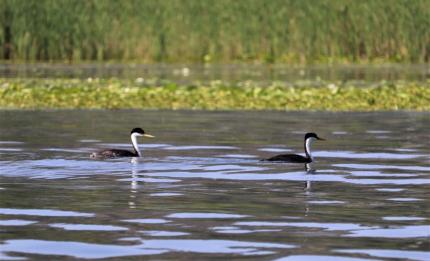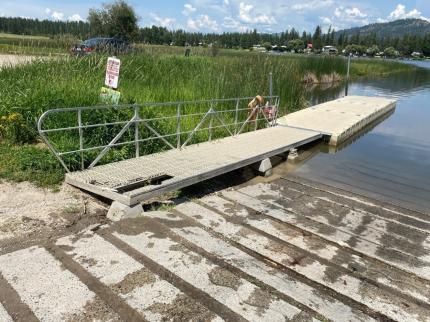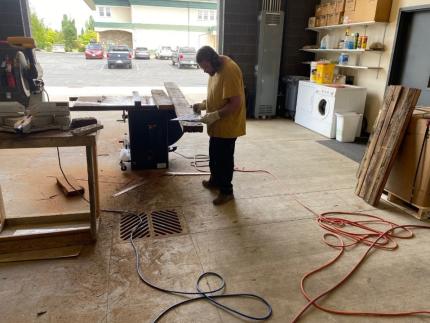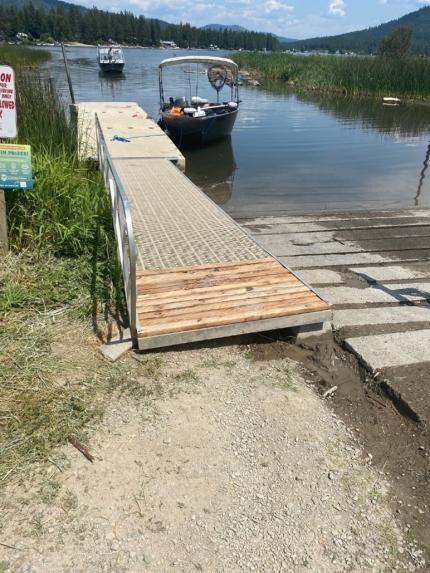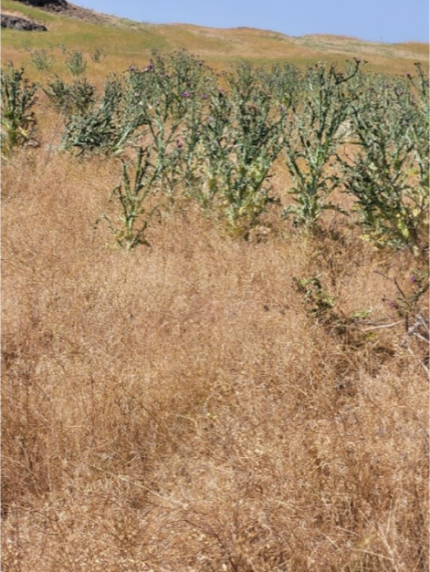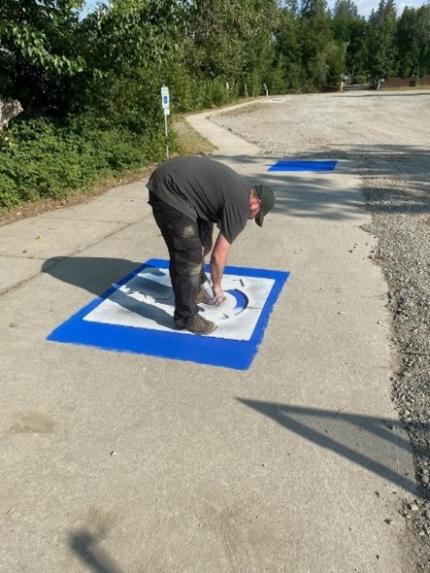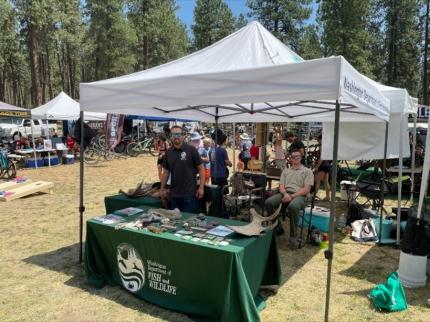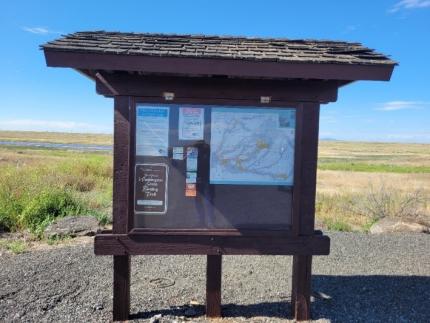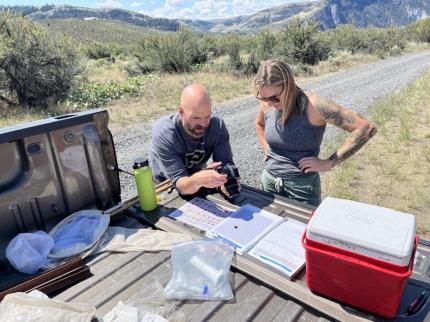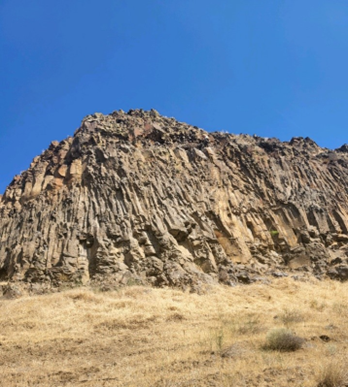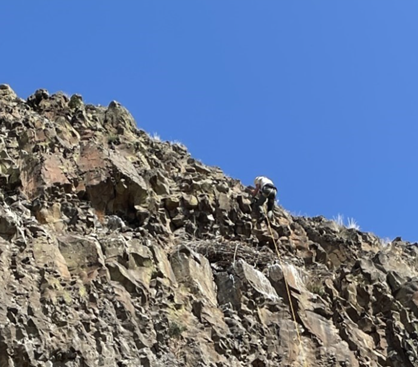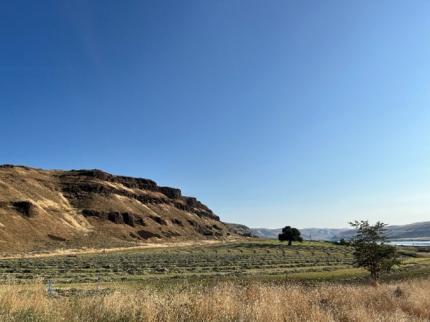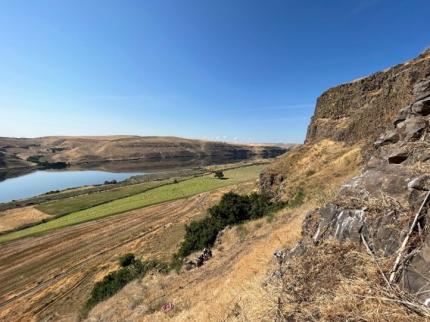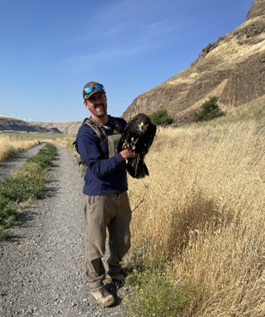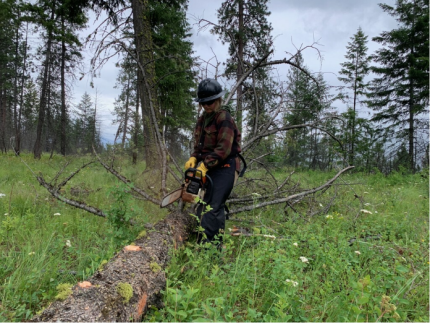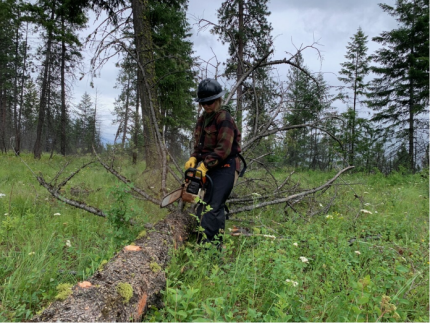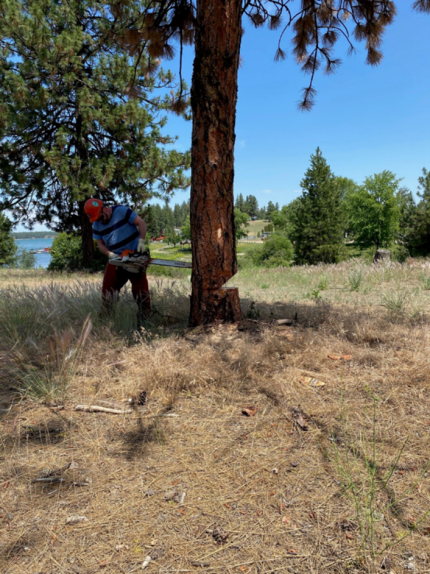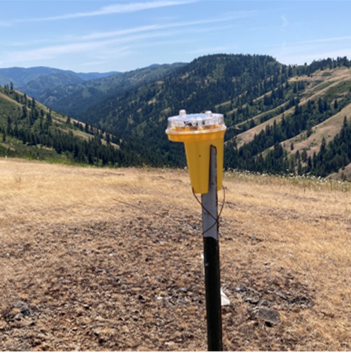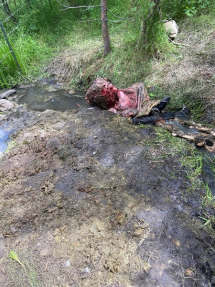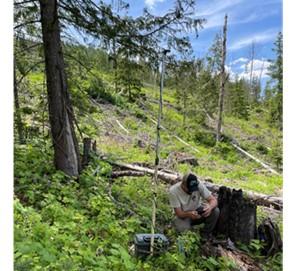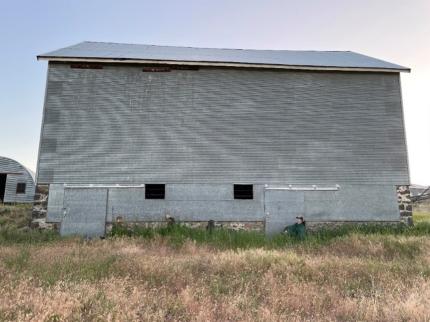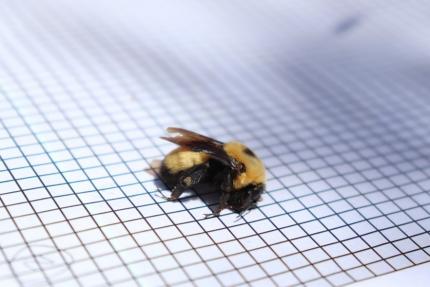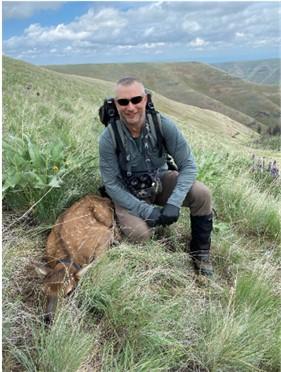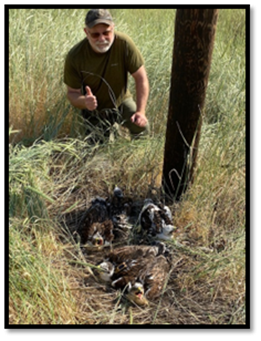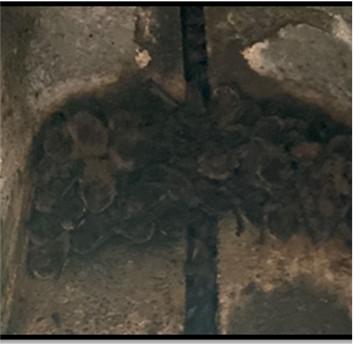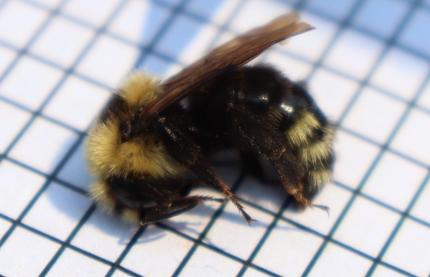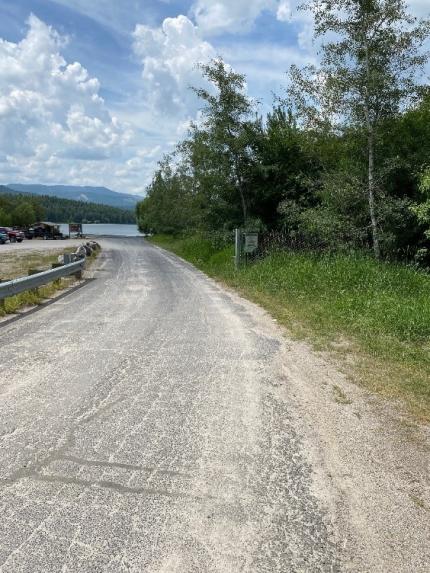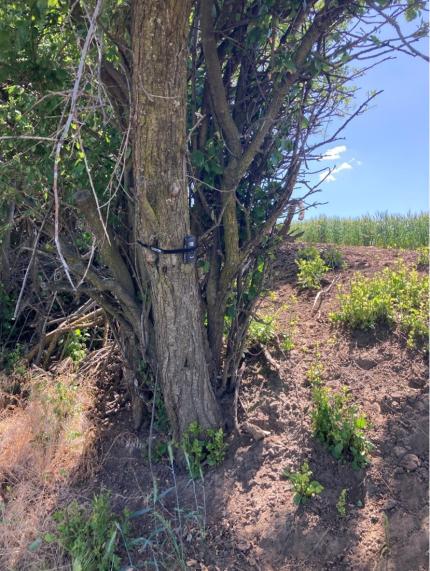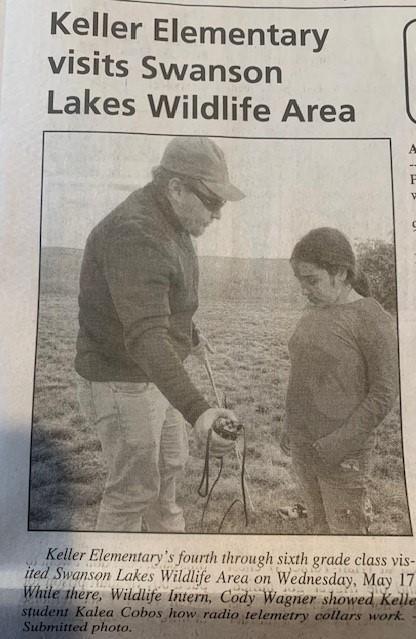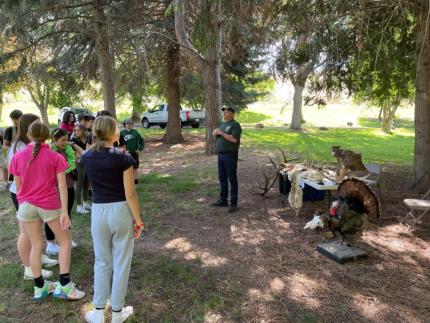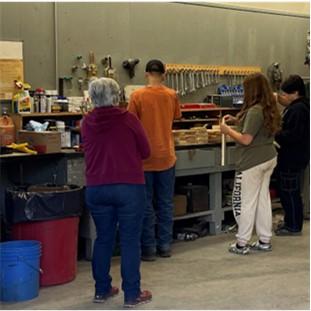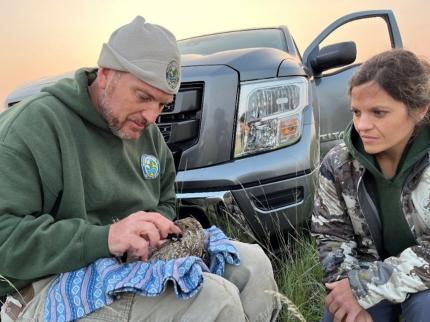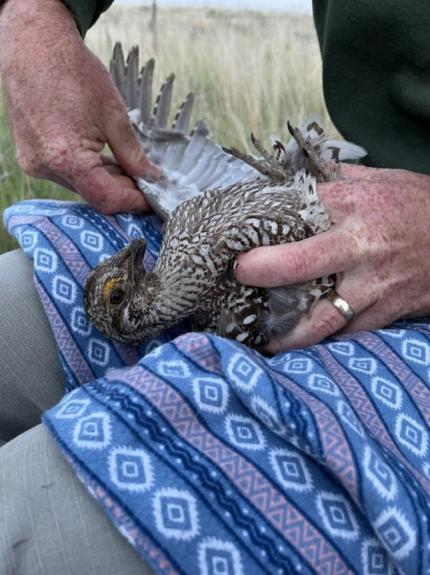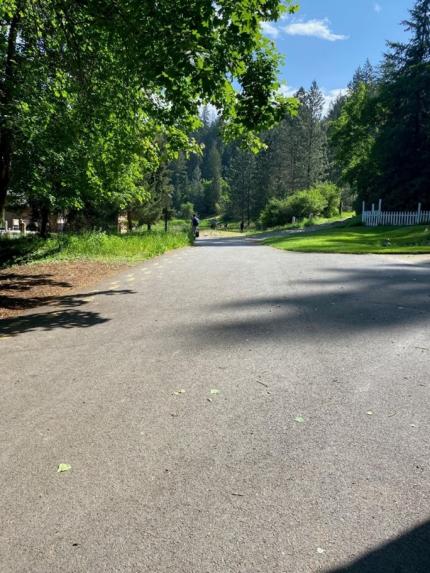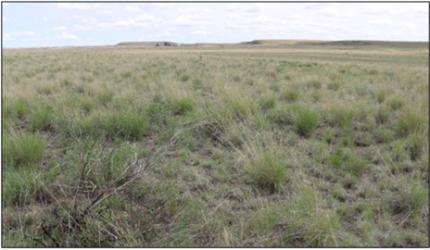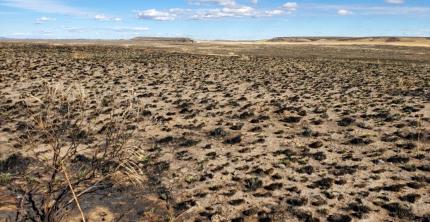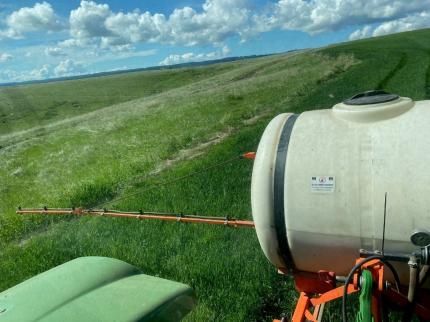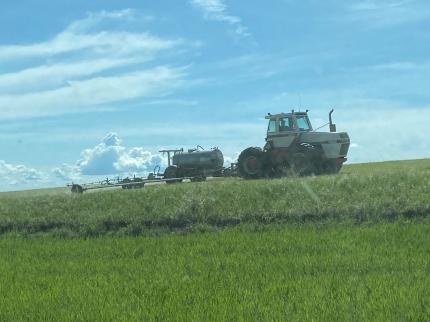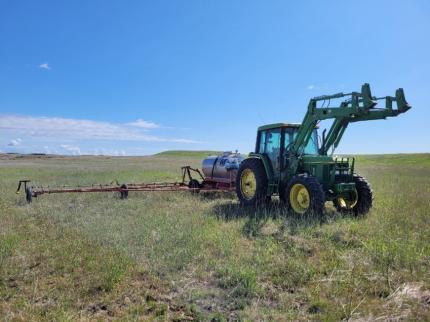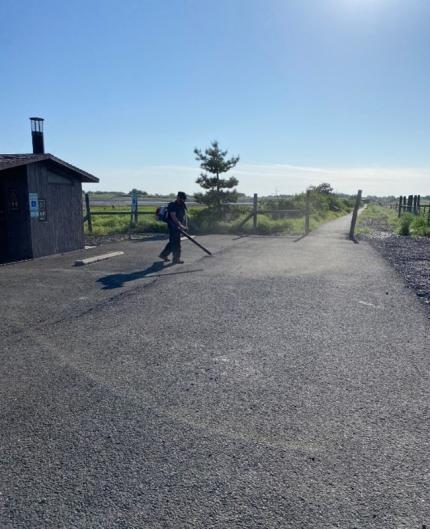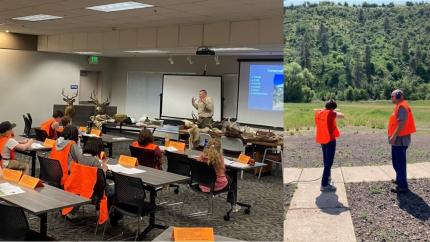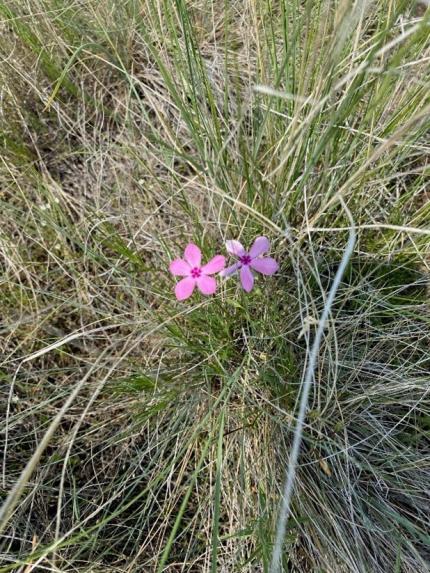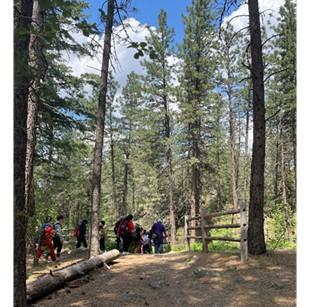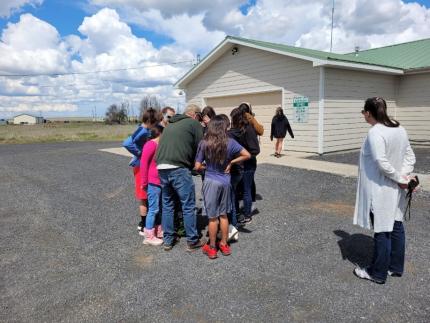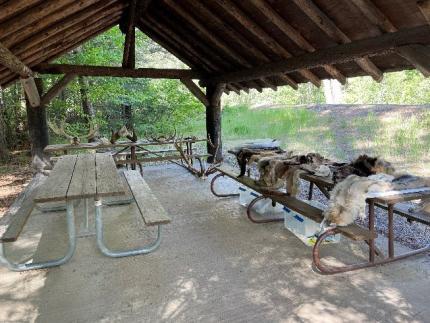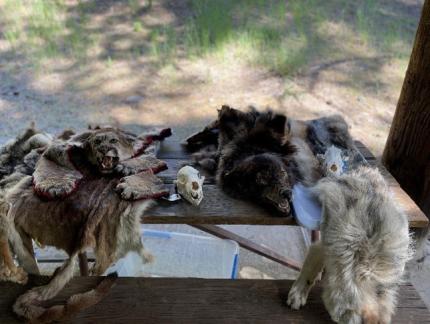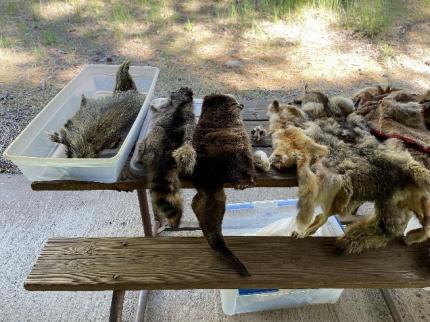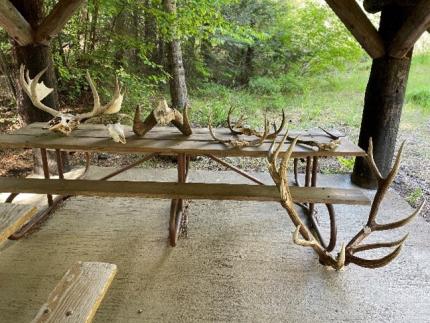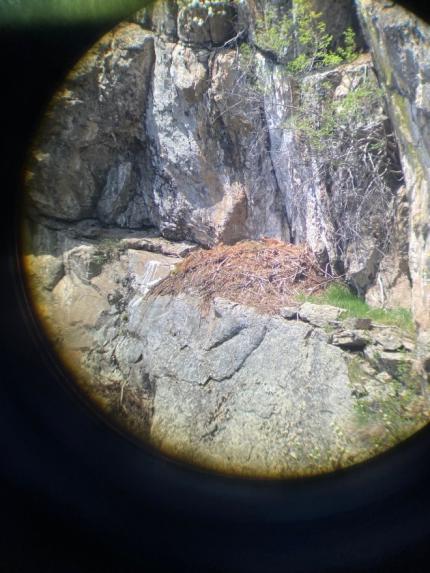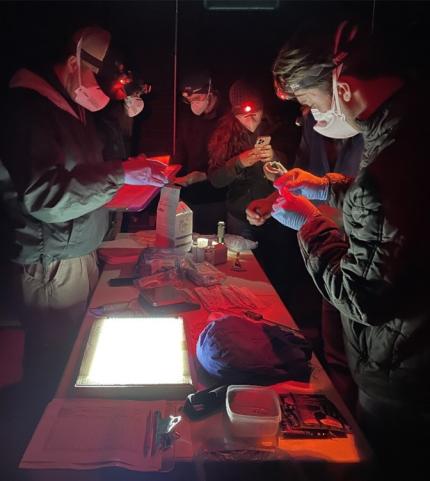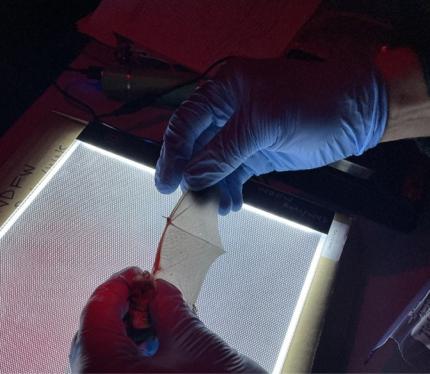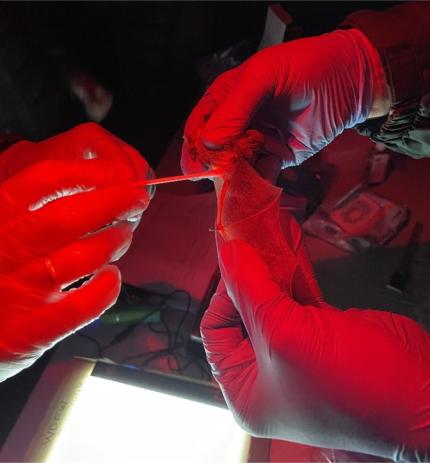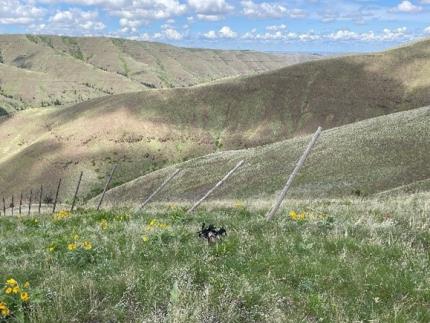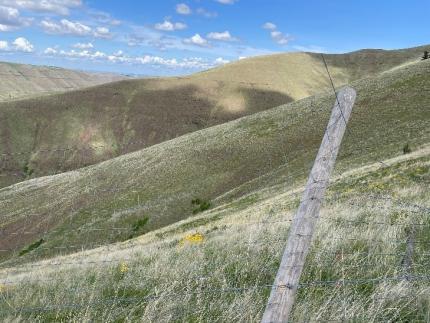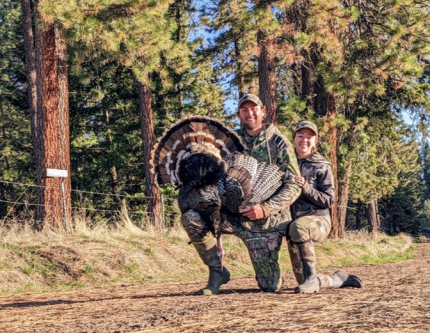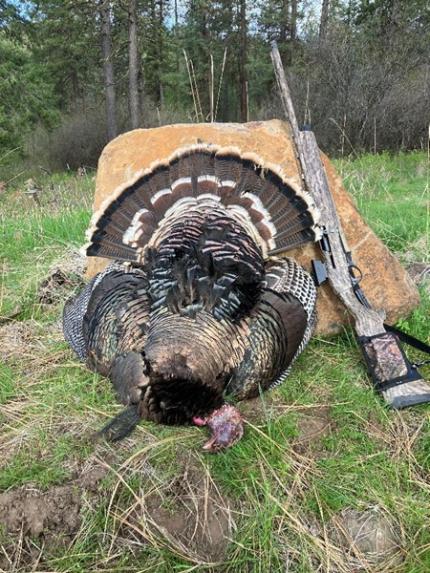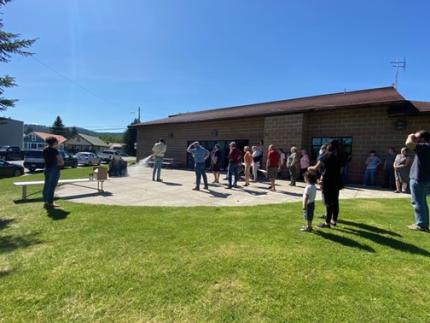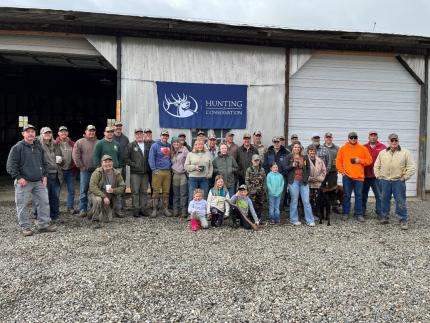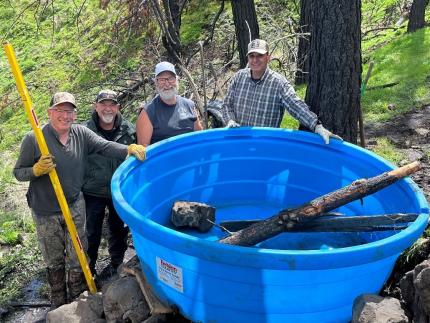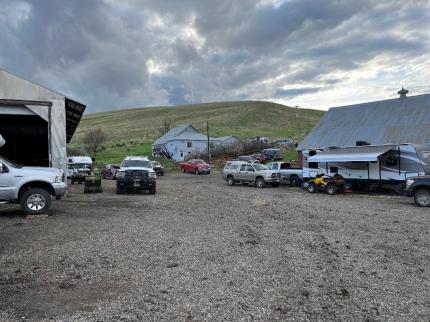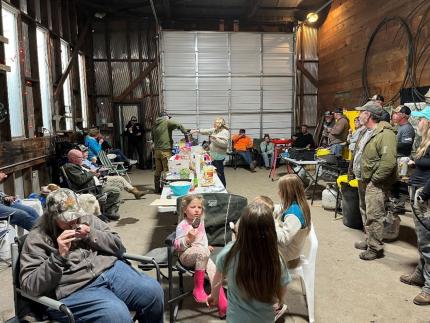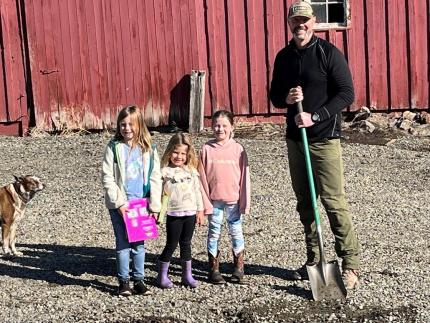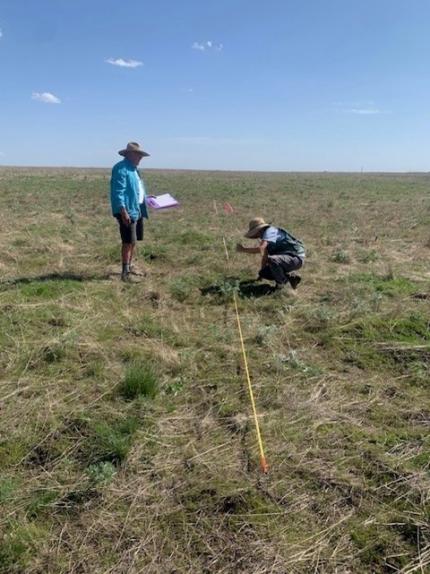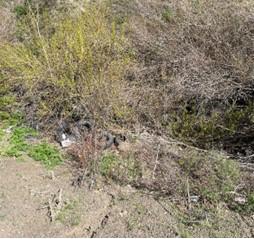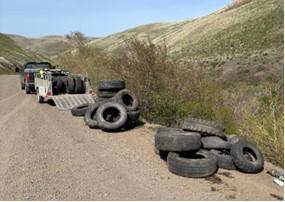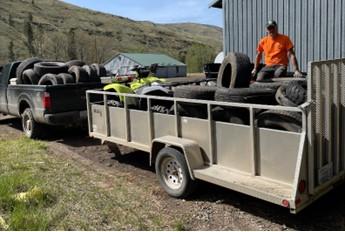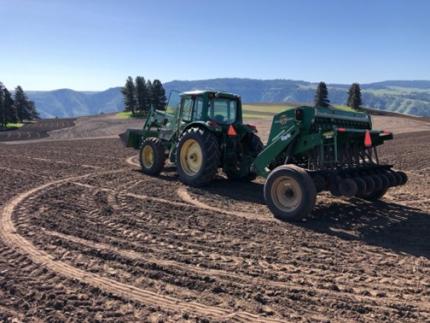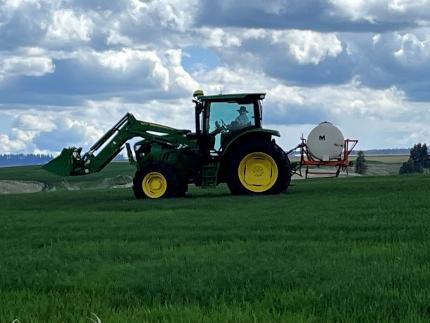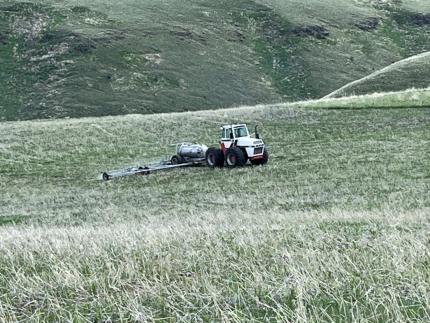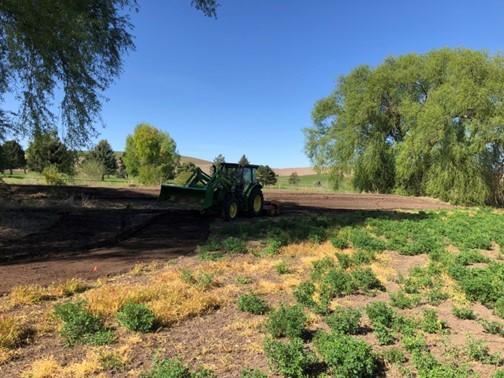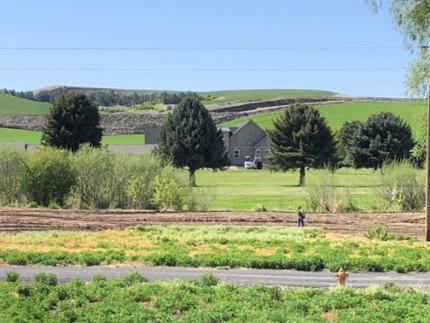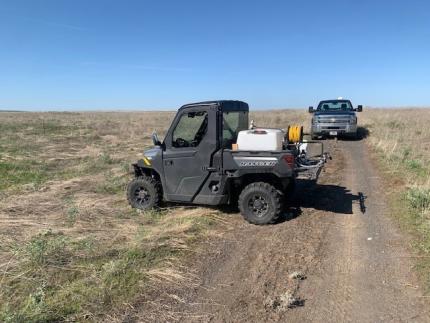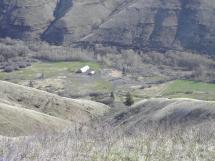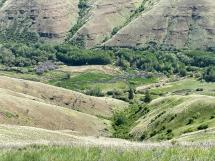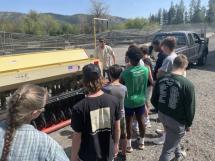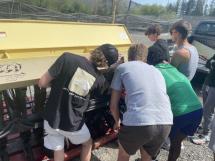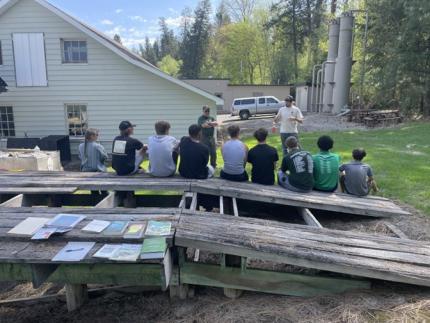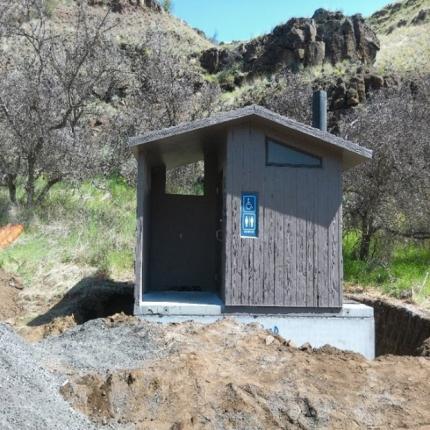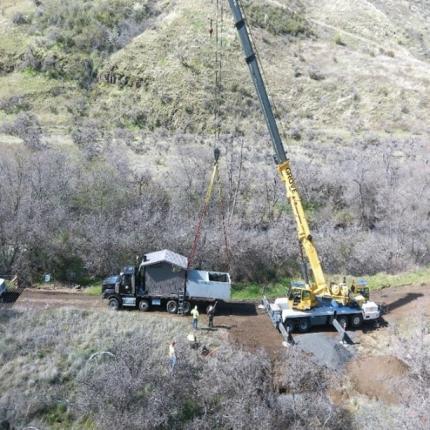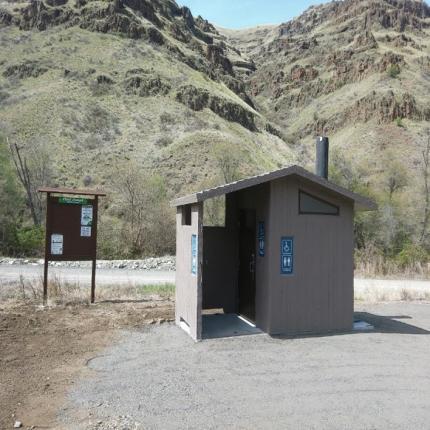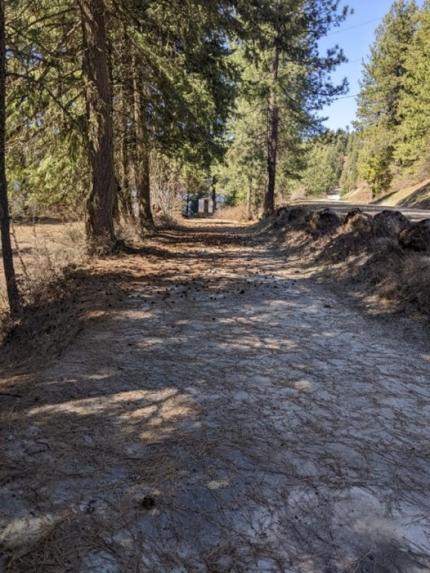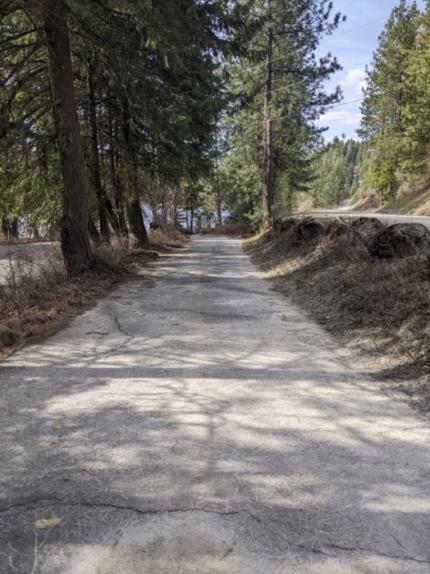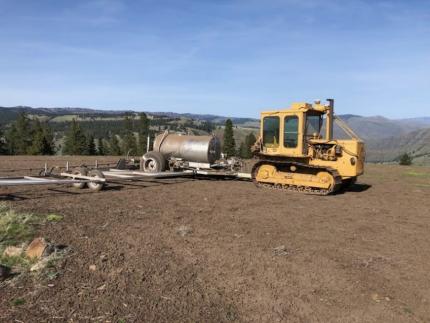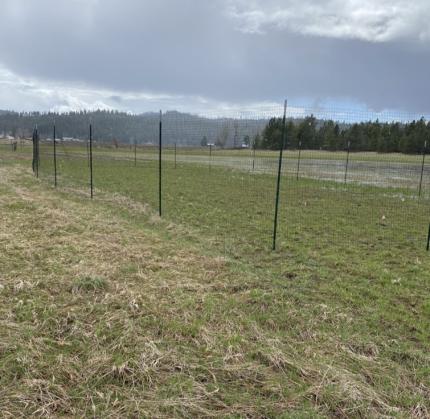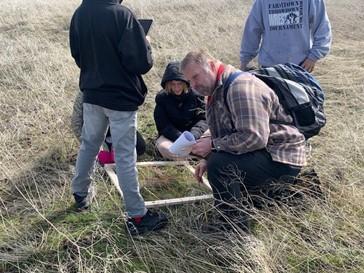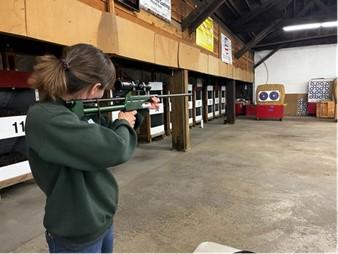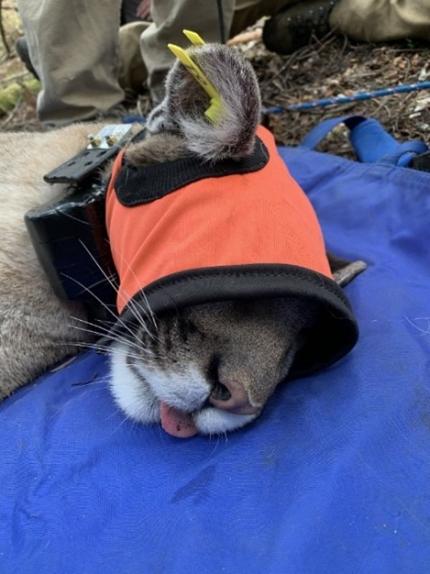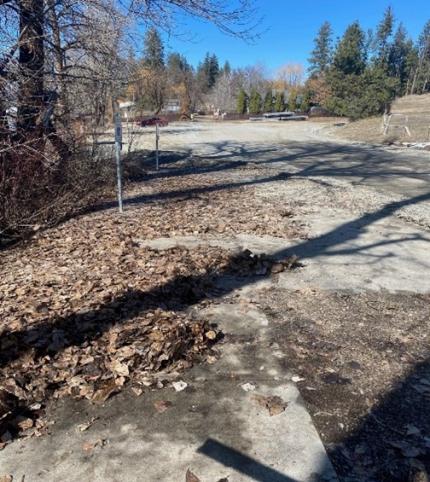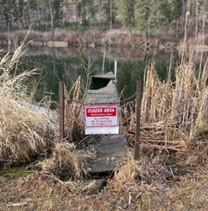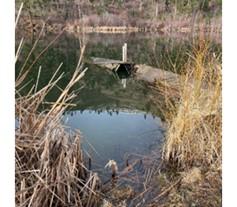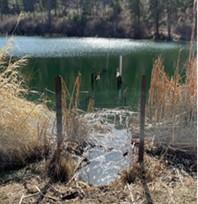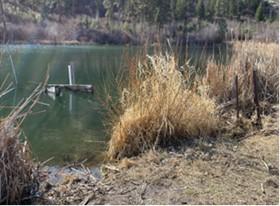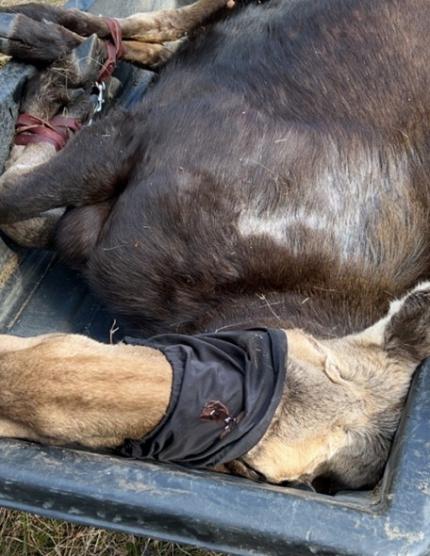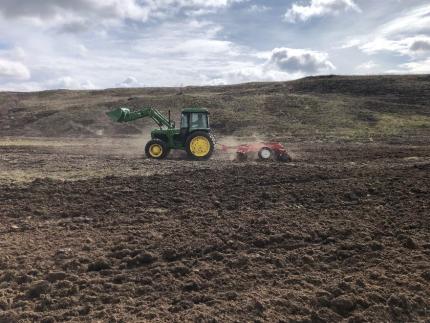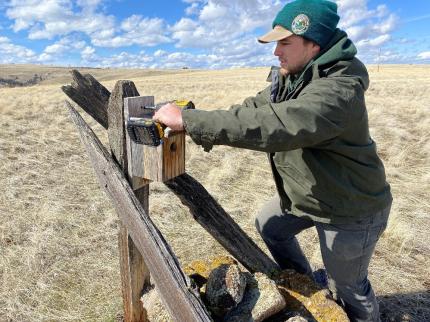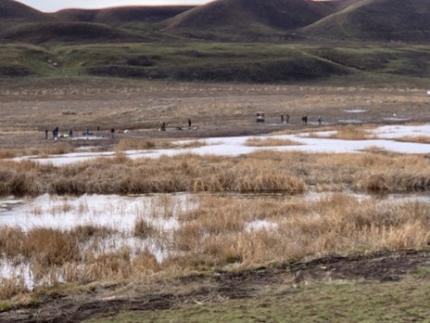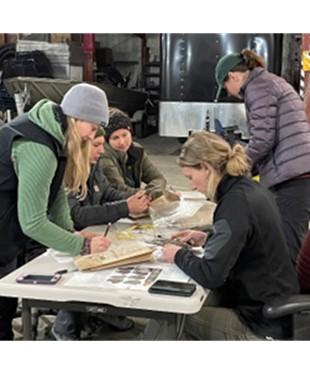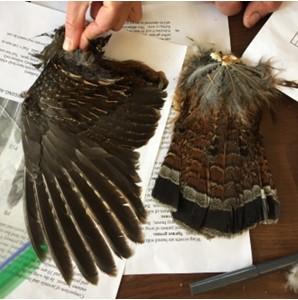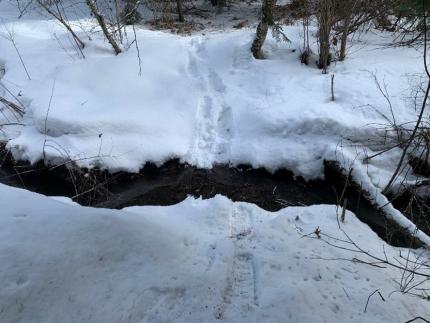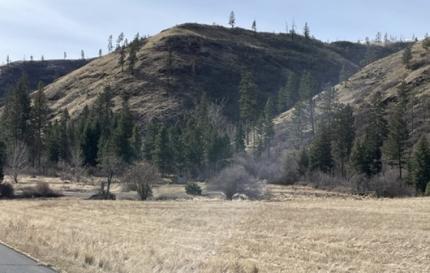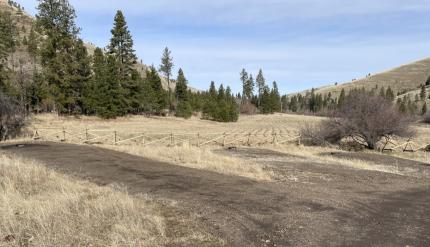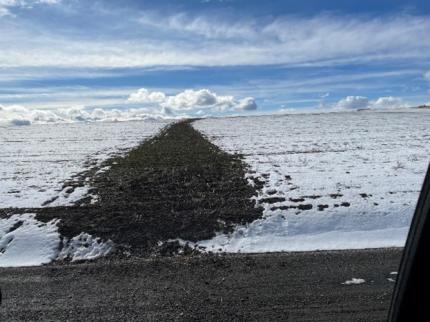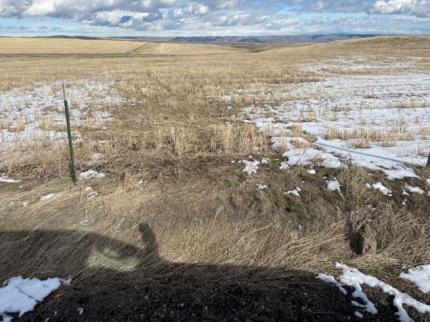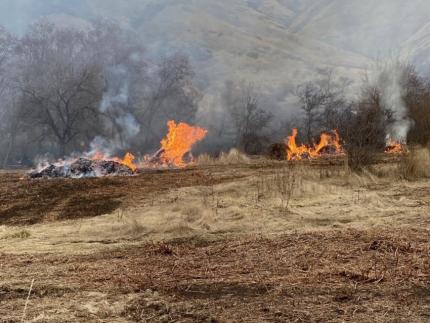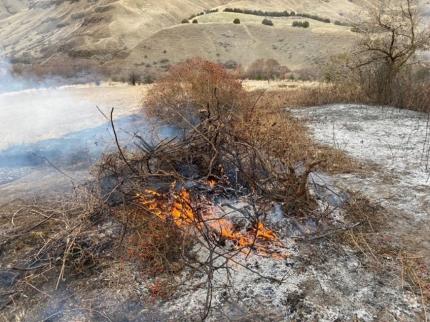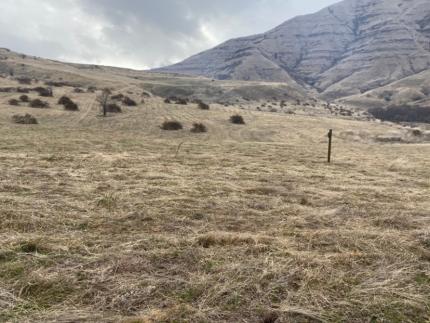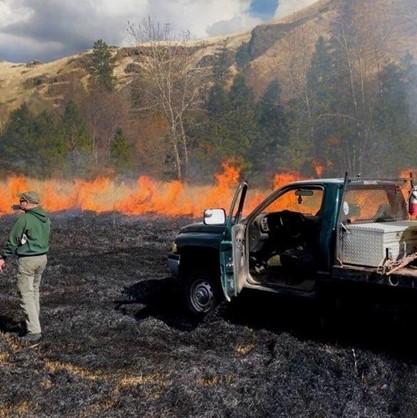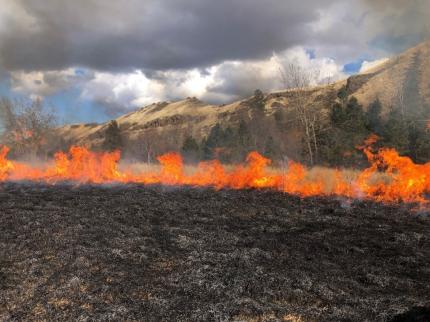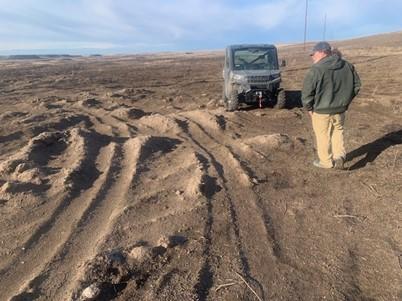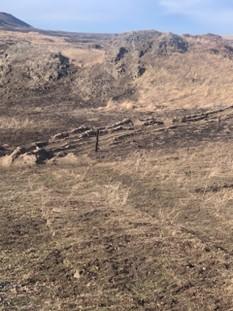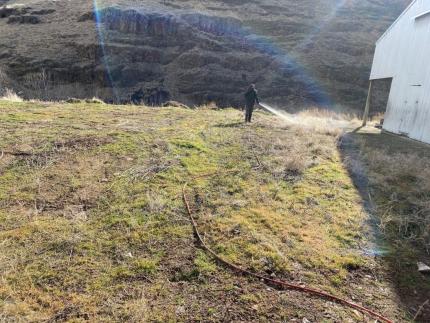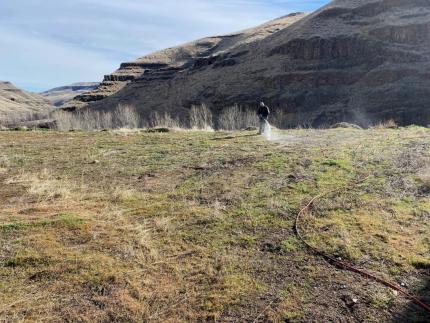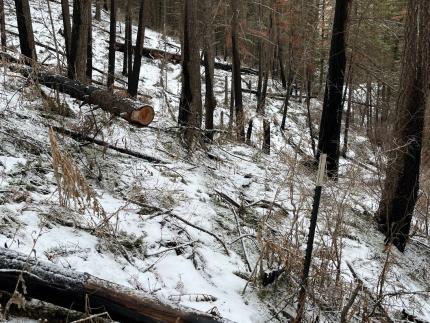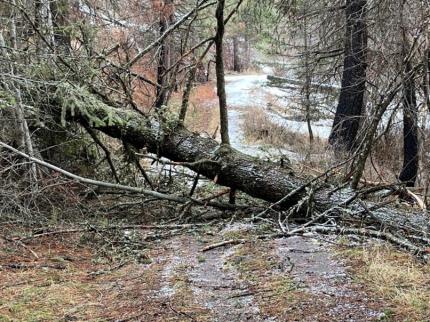Biweekly report Aug1-15 2023 - Region 1 (Eastern)
Managing Wildlife Populations
Pikas: Biologists Lowe and Brinkman had a meeting with an employee of Washington State Parks to discuss American pika on Mount Spokane. We discussed previous survey efforts and identified locations where pika have been observed on the park in the past 20 years. The park is evaluating the potential for implementation of a volunteer survey effort to search areas of suitable habitat for pika.
Chronic Wasting Disease Sample: Natural Resource Technician Harris collected a Chronic Wasting Disease (CWD) sample from a cow elk that was harvested in Game Management Unit (GMU) 121 with a depredation kill permit.
Chronic Wasting Disease Operations: Natural Resource Technician Heitstuman checked local pits for CWD samples. A sample was collected from the Clarkston pit. The laptop for sample data malfunctioned and another is being ordered.
Grizzly Bear Survey: Wildlife Biologists Prince and Turnock picked up one hair corral in Pend Oreille County. Only black bears were detected. In addition, they deployed a new corral in the same general area.
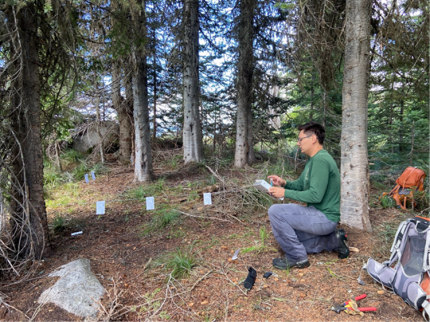
Bat Survey: Wildlife Biologists Prince and Turnock conducted an exit count bat survey in Ferry County this week. The homeowner reported the colony through Washington Department of Fish and Wildlife’s (WDFW) online reporting tool and biologists followed up to determine species using the space and number of bats present. Only 26 bats were observed. However, the week prior the landowner observed 148 using the same technique.
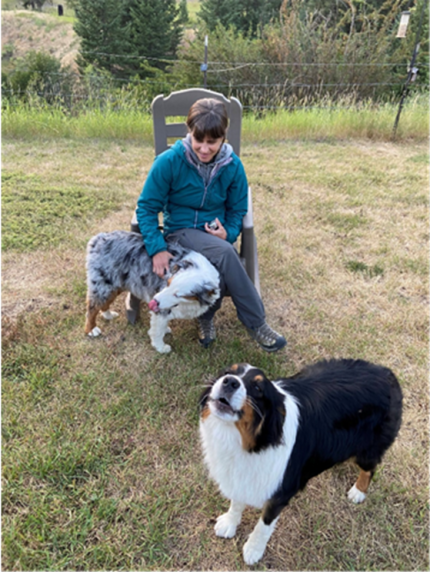
Elk Calf Survival Study: Biologist Vekasy worked with field crews coordinating mortality investigations and updating tracking spreadsheets. With a number of failed transmitters and shed collars again being an issue, particularly in GMU 175. Active collars are now down to 58 from a total of 115 deployed. As in the past, cougar predation has been the main cause of mortality, running slightly lower than previous years at 66% of all mortality causes.
Bumble Bee Surveys: Biologists Wik and Vekasy completed bumble bee surveys in a high priority cell in north Walla Walla. Although floral resources were still available at the selected survey locations, bumble bees were scarce, with only one seen at the first sight and seven captures or seen at the second sight. Vekasy also completed a survey at another partially sampled cell and found an assortment of species using a community garden in the Walla Walla area.
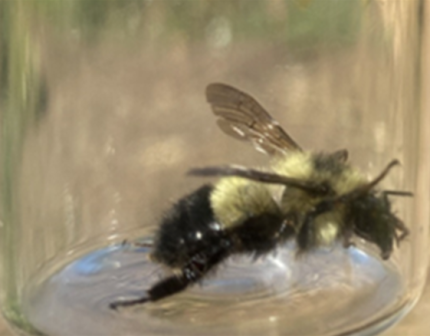

Small Bat in a Tight Spot: On Thursday, Aug. 10, Sherman Creek Wildlife Area Manager Anderson heard a thunk on an office window, as something small and dark hit the metal grid over the window. Inspection found a bat (appeared to be a little brown bat) had crawled through the grid and wedged itself between the grid and the window. Sherman Creek Wildlife Area Natural Resources Technician Zueger assisted Anderson to loosen the bolts holding the corner of the grid to the window, and propped it open a bit. The bat dropped down below the sill to hang, still behind the grill. They left the grid corner propped over the weekend for the bat to easily escape.
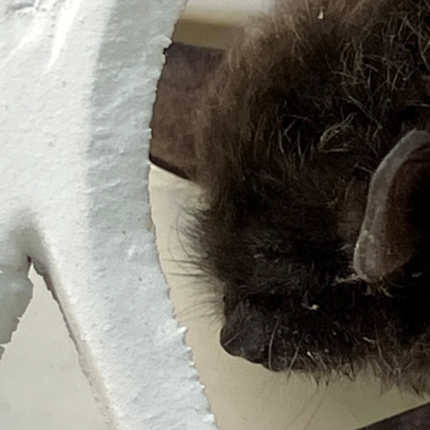
Chronic Wasting Disease Samples: Natural Resource Technician Harris collected a CWD sample from a roadkill deer in GMU 121.
Acting Private Lands Biologist Nizer took samples from two roadkill mule deer in Whitman County.
Natural Resource Technician Heitstuman checked local pits for CWD samples. Two samples were collected. Better notification was discussed on sampling opportunities.
Providing Recreation Opportunities
Trail Clearing: Sherman Creek Wildlife Area Assistant Manager Palmer and Natural Resource Technician Zueger used a mini-excavator, power tools, and hand tools to clear out portions of the Columbia River trail that runs south from Sherman Creek Wildlife Area headquarters past Sherman Creek Hatchery and down to Haag Cove.
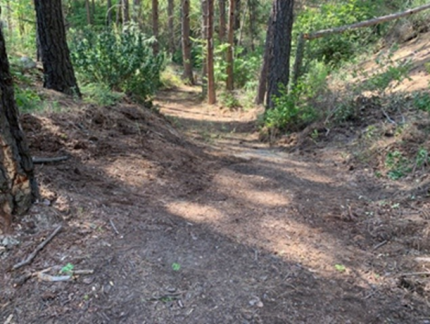

Blue Green Algae Blooms: Rainbow Lake is currently having a blue green algae bloom. Wildlife Area Manager Dingman is working with the Columbia County Health Department to get the water tested for toxins. Warning signs were posted at all access points to the lake. Watson Lake and Spring Lake are experiencing algal blooms and are being monitored for blue green algae.
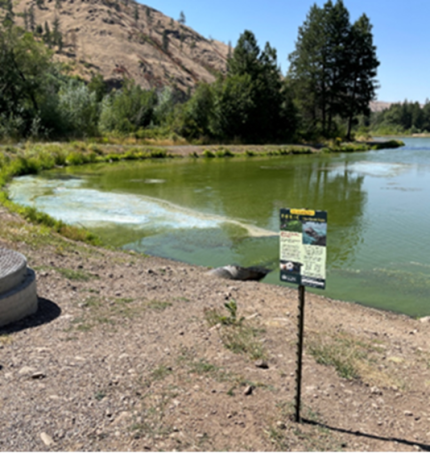
ADA Hunting Access: Natural Resource Technician Harris spoke with a disabled hunter looking for ADA hunting access for moose hunting in GMU 117. Harris provided the hunter with information about the Mitchell Mountain disability hunter access and contacts for Colville National Forest and Inland Northwest Wildlife Council Disability Access Committee. Upon request, Harris forwarded the hunter’s contact information to district biologists for more information regarding moose populations in GMU 117.
Turnbull Hunt by Reservation: Acting Private Lands Biologist Nizer coordinated with the Turnbull Wildlife Refuge by getting the agreement signed for this upcoming season.
Terminally Ill Hunter: Wildlife Conflict Specialist Kolb conducted coordination with a terminally ill hunter issued a permit from WDFW for the GMU 149 Prescott. Kolb spoke with landowner on behalf of the hunter who will be traveling from out of state to conduct the hunt.
Youth Mentor Hunt: Acting Private Lands Biologist Nizer coordinated with Jason Cushman with Pheasants Forever to coordinate the youth mentored hunt that will be taking place this fall for the youth opening weekend hunt. Properties in the reservation program are being coordinated to be reserved for this hunt.
Providing Conflict Prevention and Education
Depredation Investigation: WDFW staff members responded to a report of a dead calf being found on a United States Forest Service allotment. The calf was located partially submerged in a pond. WDFW staff members documented the area and removed the calf carcass from the pond to conduct a necropsy. They documented injuries constituent with a probable wolf depredation. Wolf tracks were documented roughly half a mile from the carcass and collar data showed that the collared animal from the 139 group had been in the area for several days. The investigation determination was probable wolf depredation
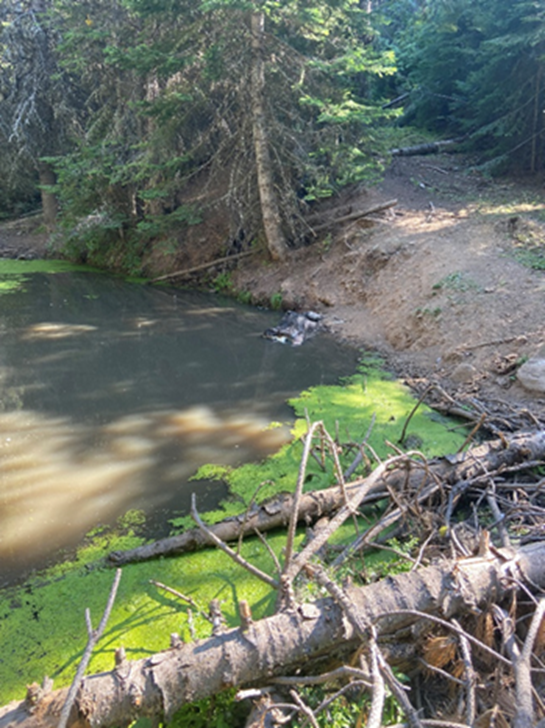
Potential Contract Range Rider Calls: Wildlife Conflict Specialist Wade reached out to two potential contract range riders this week. Both said they would call back to discuss the program and their potential interest when time allowed.
Conserving Natural Landscapes
Bureau of Land Management/Ducks Unlimited Project Tour: On Wednesday, Wildlife Area Manager Finch met with staff members from the Spokane District Bureau of Land Management (BLM), Ducks Unlimited (DU) Engineer Heck and DU Biologist Blewett at BLM’s Oliger property along Telford Road to discuss opening up a wetland area with a concrete flood control structure that was built around 2000 but had silted in to just a small stream running down the property. The discussion was to determine where to stack the spoils that had been already culturally cleared by the BLM archologist. The other discussion was to use the Swanson Lakes Wildlife Area staff members, already funded through an existing BLM agreement, to accomplish the work.
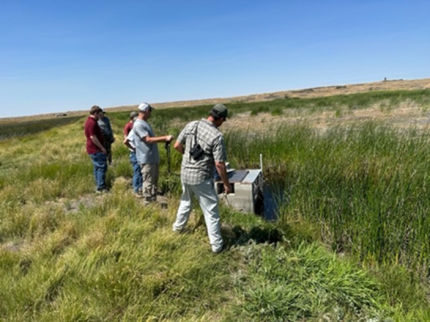
Conservation Reserve Program: Acting Private Lands Biologist Nizer assisted Rock Lake Conservation District in mowing a site for weeds next to a creek area. This site was recently planted with native shrubs this last fall by WDFW staff members and seeded with perennial grasses.
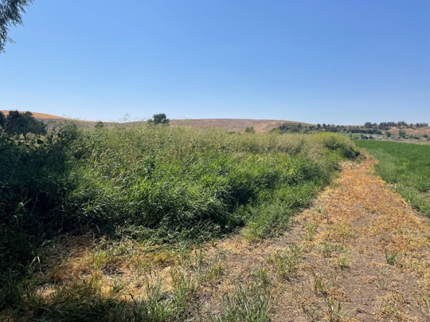
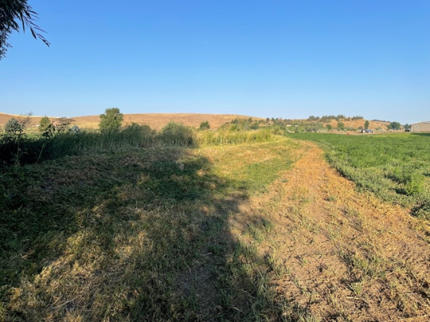
Turkey Proposals: Private Lands Biologist Hadley received information for project proposals from WDFW and the National Wild Turkey Federation to pass on to partners that may be interested. Hadley discussed a potential project partnership with the Corps of Engineers and will follow up next week with more details.
4-O Ranch Wildlife Area Bucannon Field Restoration: Biologist Woodall spent the week traveling to the 4-O Ranch and mowing weeds out of the Bucannon field. In spring 2023, this field was planted with orchard grass. This field has been a hotbed of weed infestations. We chose orchard grass to compete against weeds and provide good forage for elk.
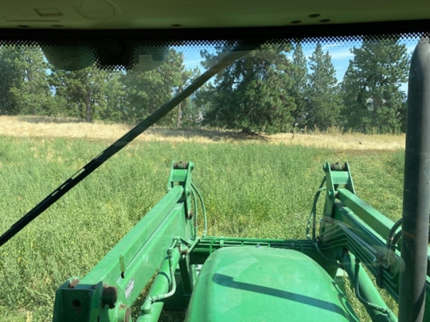
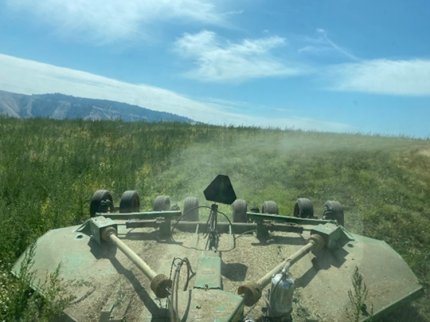
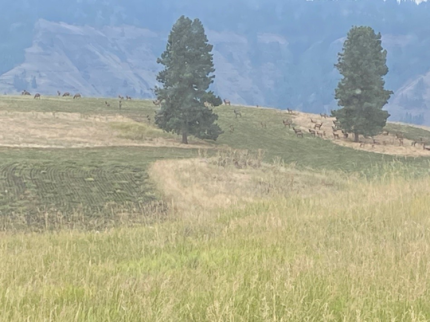
Habitat Improvement Planning: Natural Resource Technician Harris met with a Hunting only by Written Permission cooperator to discuss potential habitat improvement projects for waterfowl, deer, and upland game species.
Sourcing Seed and Plants: At the request of the Private Lands Biologist Baarstad, Natural Resource Technician Heitstuman was able to source and secure a minimum of 200 pounds of fall canola seed for planting. The seed will be delivered to the St. John office on Aug. 15 where it will be picked up and taken to the Swanson Lakes Wildlife Area for planting.
Providing Education and Outreach
Hunter Education: Wildlife Conflict Specialist Kolb set up venue locations for a September Hunter Education traditional class and a separate online class field day.
Rocky Mountain Elk Foundation 2023 Rendezvous: Wildlife Area Manager Dice put together a Power Point presentation on Lick Creek fire recovery projects and past Rocky Mountain Elk Foundation (RMEF) volunteer activities on the Asotin Creek Wildlife Area and presented it to RMEF members at their 2023 Rendezvous at White Pass on Saturday. The presentation went well and was appreciated by the members.
National Hunting and Fishing Day Preparation: Wildlife Conflict Specialist McCarty assisted with organizing presenters for the National Hunting and Fishing Day that will be held in District 1 per request of Volunteer Coordinator Dazey.
Conducting Business Operations and Policy
Pasture Ride Along: Wildlife Conflict Specialist Kolb conducted a ride along with a producer on private pasture in Touchet pack territory. Kolb assisted the producer with trail camera set up as well as documenting wolf signs in different areas of the pasture.
District 3 Draft Lethal Removal Recommendation Meeting: Wildlife Conflict Supervisor McCanna facilitated a meeting to start the draft lethal removal recommendation process for the WA139 wolf group. McCanna made assignments for staff members to start filling in portions of the recommendation. McCanna will call another meeting if we have another confirmed wolf depredation.
Cattle Producers of Washington Board Meeting: Wildlife Conflict Supervisor McCanna attended a special board meeting to discuss the new Department of Agriculture grant received. We then met with the range riders to review and sign new contracts, discuss WDFW expectations for their handwritten logs, and install the new software upgrade on their InReach devices.
Other
Weather Event: On Monday, a severe thunderstorm rolled through the area and knocked out the power for over four hours and dropped rainfall over one inch. In some locations, rainfall measured closer to two inches.
